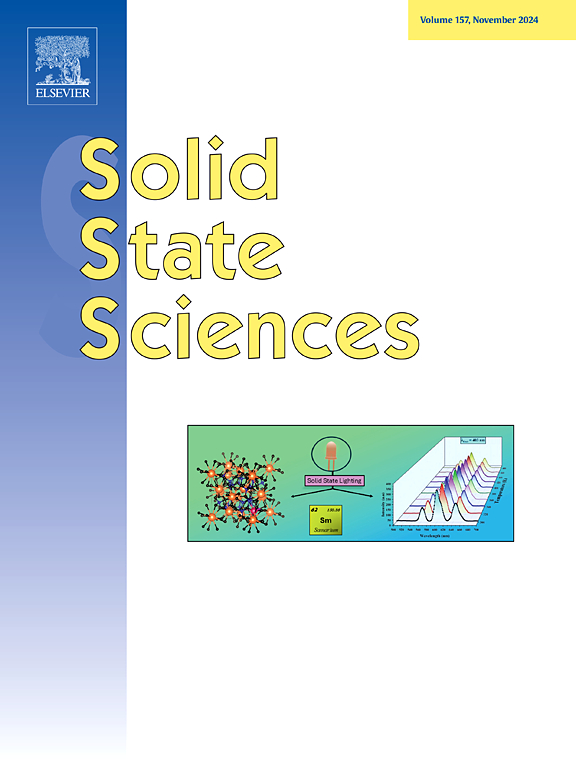Optical and transport properties of Ba(Fe1−xNix)2As2 films
IF 3.4
3区 化学
Q2 CHEMISTRY, INORGANIC & NUCLEAR
引用次数: 0
Abstract
The broad-band optical spectroscopy was used to study the optical and the hidden transport properties of the Ba(FeNi)As superconducting films with different Ni contents. The normal state data were analyzed using a Drude–Lorentz model with two Drude components: narrow and broad ones. In the superconducting state, two gaps with and are formed for the Ba(Fe0.965Ni0.035)As films, while for the Ba(Fe0.95Ni0.05)As films these characteristic ratios are 1.88–2.08 and 3.66–4.13. Both gaps are formed from the narrow Drude component, whereas the broad Drude component remains ungapped. The calculated from infrared data total dc resistivity of the films with Ni contents and as well as the low-temperature scattering rate for the narrow Drude component show a hidden Fermi-liquid behavior. On the contrary, the films with manifest a hidden non-Fermi-liquid behavior. The Allen theory generalized to a multiband systems was applied to the analysis of the temperature dependences of a resistivity of the Ba(FeNi)As films. The change of total electron-boson coupling and representative energy in the normal state versus the superconducting state for this system was shown to be typical of other iron-based superconducting materials as well as high-temperature superconducting cuprates.

Ba(Fe1−xNix)2As2薄膜的光学和输运性质
利用宽带光谱学研究了不同Ni含量Ba(Fe1−xNix)2As2超导薄膜的光学和隐输运性质。正常状态数据分析使用德鲁德-洛伦兹模型,该模型具有两个德鲁德分量:窄和宽。在超导状态下,Ba(Fe0.965Ni0.035)2As2薄膜形成2Δ0(1)/kBTc=1.57和2Δ0(2)/kBTc=3.48两个间隙,Ba(Fe0.95Ni0.05)2As2薄膜形成1.88-2.08和3.66-4.13两个间隙。这两个缺口都是由狭窄的德鲁德部分形成的,而宽阔的德鲁德部分仍然未被填补。利用红外数据计算出Ni含量为x=0.05和x=0.08时薄膜的总直流电阻率以及窄德鲁德组分的低温散射率显示出隐藏的费米-液体行为。相反,x=0.035的薄膜表现出隐藏的非费米液体行为。将推广到多波段系统的Allen理论应用于Ba(Fe1−xNix)2As2薄膜电阻率的温度依赖性分析。该体系在正常状态和超导状态下的总电子-玻色子耦合和代表能量的变化与其他铁基超导材料以及高温超导铜酸盐具有典型的相似之处。
本文章由计算机程序翻译,如有差异,请以英文原文为准。
求助全文
约1分钟内获得全文
求助全文
来源期刊

Solid State Sciences
化学-无机化学与核化学
CiteScore
6.60
自引率
2.90%
发文量
214
审稿时长
27 days
期刊介绍:
Solid State Sciences is the journal for researchers from the broad solid state chemistry and physics community. It publishes key articles on all aspects of solid state synthesis, structure-property relationships, theory and functionalities, in relation with experiments.
Key topics for stand-alone papers and special issues:
-Novel ways of synthesis, inorganic functional materials, including porous and glassy materials, hybrid organic-inorganic compounds and nanomaterials
-Physical properties, emphasizing but not limited to the electrical, magnetical and optical features
-Materials related to information technology and energy and environmental sciences.
The journal publishes feature articles from experts in the field upon invitation.
Solid State Sciences - your gateway to energy-related materials.
 求助内容:
求助内容: 应助结果提醒方式:
应助结果提醒方式:


